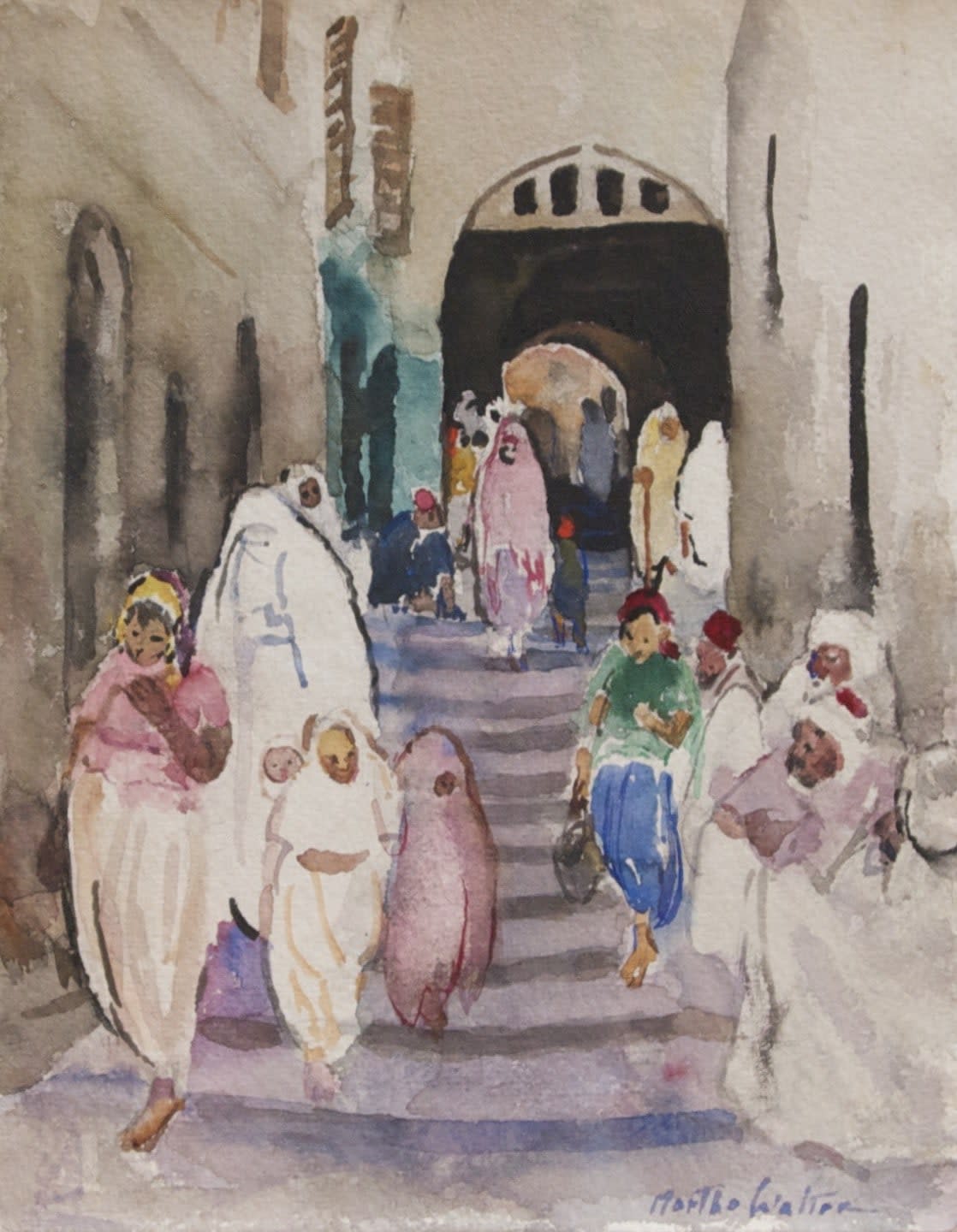

Framed: 17 1/2 x 15 1/2 inches
artist
Martha Walter was a second generation American Impressionist known for her bold and colorful painting style. She went to Europe to further her art education when she was in her early thirties and revisited often throughout her life.
Walter devoted her long and successful career to painting life as she saw it with overtones of Impressionism and Modernism. Her favored subjects were women and children, and she preferred above all else to paint right in front of her subjects rather than to work from sketches or photographs. In this way, she painted at the shore, in the teeming markets of North Africa, and – in a unique series of paintings known as her Ellis Island group – inside the crowded immigration facilities on New York’s Ellis Island.
A native of Philadelphia, Walter attended Girls High School. While still in school, she was admitted to the Pennsylvania Academy of Fine Arts, where she studied with William Merritt Chase. With Chase she began to paint with rich, saturated color and to successfully use black, which for the most part was avoided by the Impressionists. In 1908, Walter was the recipient of the academy’s Cresson Traveling Scholarship, which paid for two years of study and travel abroad. She went to Paris and enrolled, successively in the Academie Grande Chaumiere and the Academie Julian, but finding Parisian academy instruction far too conservative, she left to paint Parisian cafes and park scene en plein air. She rented a studio with other young women from the United States who shared her views.
Walter first attracted renown for her beach scenes, a theme that had its genesis while she was in France, on the beaches of St. Malo, Deauville, Trouville, and Biarritz. The onset of World War I brought her back to the United States. She took a studio in New York City and continued to paint colorful figures at the Beach by visit Coney Island, Atlantic City and Gloucester, Massachusetts, where she summered and opened an art school. She eventually moved back to the Philadelphia area, settling in Melrose Park, Pennsylvania.
Walter participated in the annual exhibitions of the Pennsylvania Academy over a fifty-year period and received the academy’s gold medal in 1923. She also exhibited for thirty-two years in the annuals of the Art Institute of Chicago. Her work was the subject of one-woman exhibitions at the Cincinnati Art Museum in 1914, the Galerie Georges Petit, Paris in 1922 and the Art Club of Chicago in 1941.

